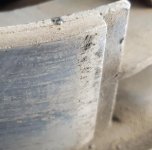Online
For all the methods of bleeding I've tried, I've found replacing the bleeders with Speedi-bleeders to work best of all. One person brake bleeding by depressing the brake pedal without having to involve SWMBO with potential marriage-ending shouting matches, "No, not down, up!!!" You can find them here: https://www.ebay.com/itm/Austin-Healey-3000-Brakes-Only-Speed-Bleeders-/273985513425 although there are plenty of other sellers if you know the thread sizes. They are already coated with a sealant, so they don't leak. Crank open one bleeder at a time, and you're done.

 Hi Guest!
Hi Guest!

 smilie in place of the real @
smilie in place of the real @
 Pretty Please - add it to our Events forum(s) and add to the calendar! >>
Pretty Please - add it to our Events forum(s) and add to the calendar! >> 


